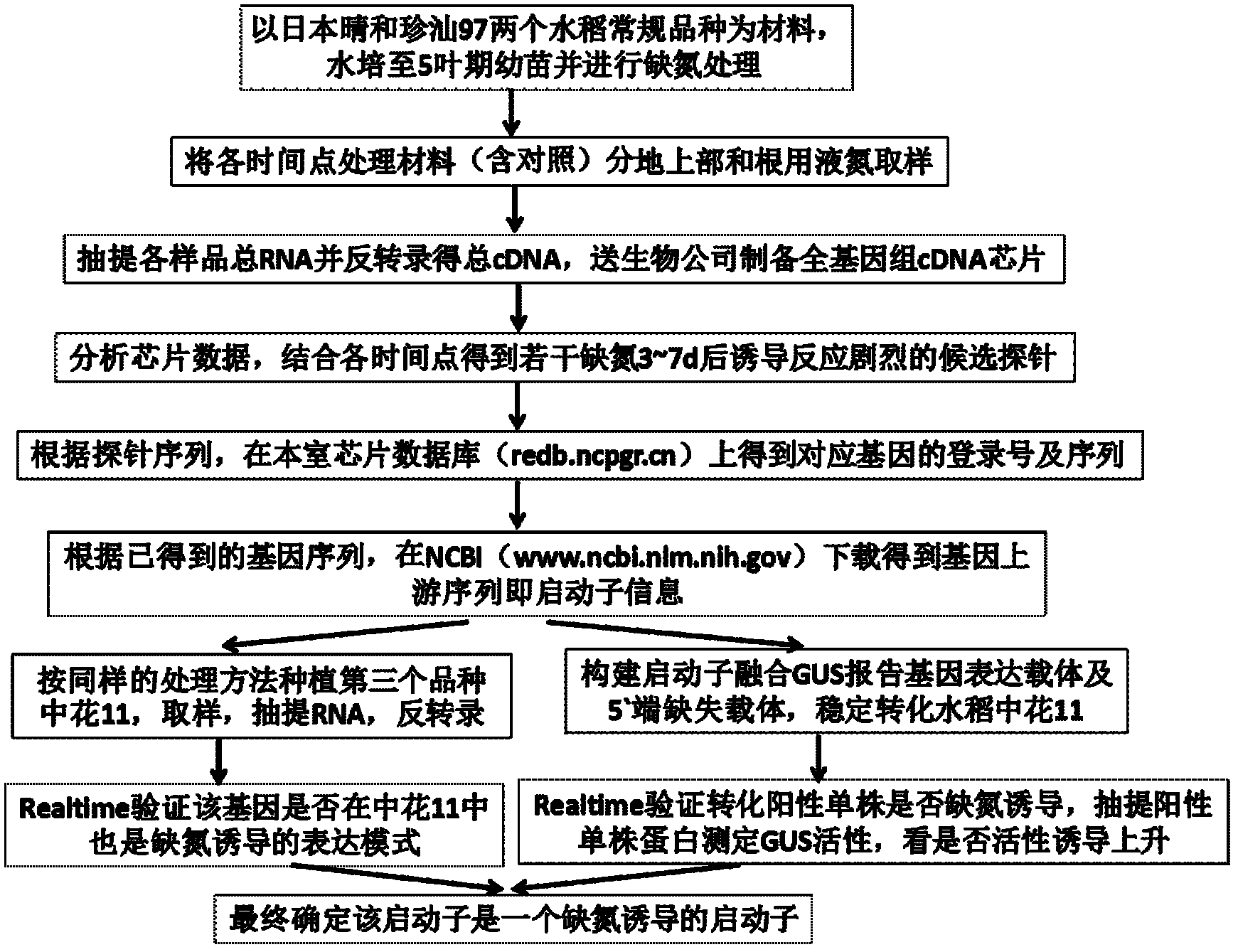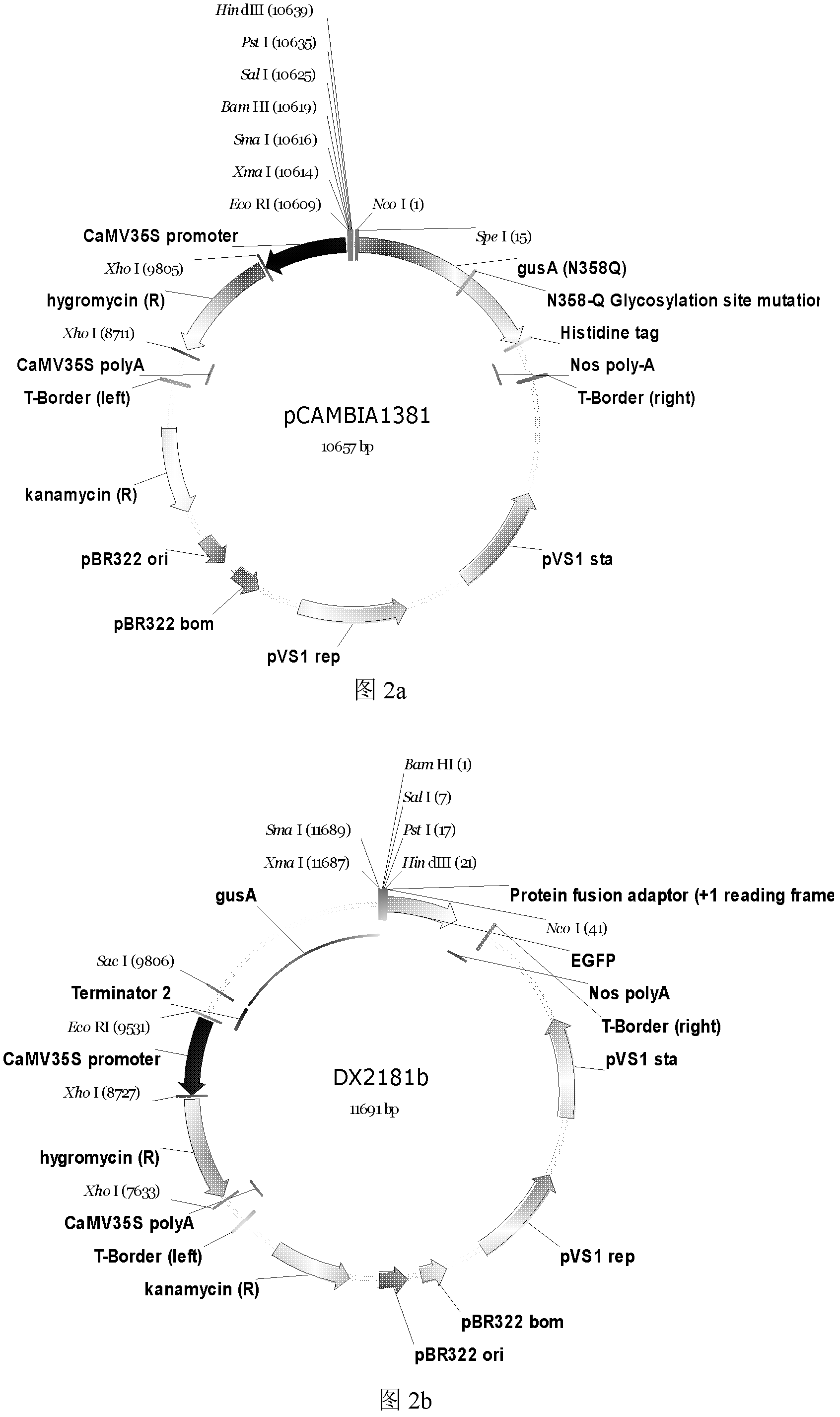Paddy rice nitrogen deficiency specific induced expression promoter Y5 and application thereof
A technology for inducing expression and promoters, which is applied in the field of plant genetic engineering and can solve the problems of single plant biological yield and grain yield decline
- Summary
- Abstract
- Description
- Claims
- Application Information
AI Technical Summary
Problems solved by technology
Method used
Image
Examples
Embodiment 1
[0028] Example 1 Determination of the regulatory mode of the promoter Y5 and acquisition of the sequence
[0029] In order to discover the promoters of nitrogen deficiency-induced gene expression in rice and provide new promoter materials for genetic engineering to improve nitrogen uptake in rice, we designed the attached figure 1 In the technical roadmap, two well-known and commonly used conventional rice varieties were selected as experimental materials: Nipponbare and Zhenshan 97. Microarray technology is used to select new genes that have a significant response to nitrogen stress. This technology can be used to quantitatively detect the expression levels of a large number of genes at different times (Yang Rong et al., 1999).
[0030] The seeds of Nipponbare and Zhenshan 97 were soaked at 37°C for 3 days, accelerated for 2 days, seedlings emerged in sand culture for one week, and transplanted to rice full nutrient solution hydroponics (hydroponic nutrient solution composit...
Embodiment 2
[0031] Embodiment 2: Construction of promoter expression transformation vector
[0032] According to the known full-length promoter sequence of gene Y5 (see sequence listing SEQ ID NO: 1) and its truncated sequence Y5B (see sequence listing SEQ ID NO: 2), Y5C (see sequence listing SEQ ID NO: 3), Y5D (see the sequence table described in SEQ ID NO: 4) design primers (see Table 1 for the primer sequence), and use the total DNA of the rice variety Zhonghua 11 as a template to amplify to obtain the full-length sequence of the promoter Y5A respectively (1305bp) and truncated Y2B (1062bp), Y2C (784bp) and Y5D (546bp). When amplifying these four fragments, the same restriction endonuclease site HindIII (as shown in Table 1-1) was added to the 5' ends of the four pairs of primers, so the amplified fragments can be obtained by restriction The endonuclease HindIII was digested, and then connected to the promoter vector DX2181b (the vector DX2181b was transformed by the researchers of th...
Embodiment 3
[0038] Example 3: Rice transformation experiment after the full-length Y5 promoter and its truncated promoter fragment were fused to GUS
[0039] After connecting the full length of the Y5 promoter and its truncated promoter fragments to the vector DX2181b, the transformed rice positive plants were obtained by using the method of Agrobacterium-mediated transgenesis. The specific transformation steps are as follows:
[0040] The obtained correctly cloned plasmids (DX2181b-Y5A, DX2181b-Y5B, DX2181b-Y5C and DX2181b-Y5D) were introduced into the rice variety Hua 11 through the rice genetic transformation system mediated by Agrobacterium (EHA105 provided by CAMBIA Laboratory, Australia) In , transformed plants were obtained through precultivation, infection, co-cultivation, selection of hygromycin-resistant calli, differentiation, rooting, seedling training and transplanting. The Agrobacterium-mediated genetic transformation system of rice (subspecies japonica) mainly adopts the fu...
PUM
 Login to View More
Login to View More Abstract
Description
Claims
Application Information
 Login to View More
Login to View More - R&D
- Intellectual Property
- Life Sciences
- Materials
- Tech Scout
- Unparalleled Data Quality
- Higher Quality Content
- 60% Fewer Hallucinations
Browse by: Latest US Patents, China's latest patents, Technical Efficacy Thesaurus, Application Domain, Technology Topic, Popular Technical Reports.
© 2025 PatSnap. All rights reserved.Legal|Privacy policy|Modern Slavery Act Transparency Statement|Sitemap|About US| Contact US: help@patsnap.com



